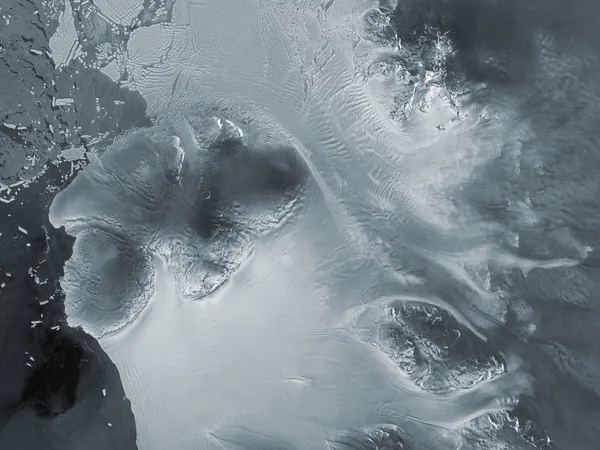
Glacier Heist! Antarctic Giant 'Stealing' Ice from its Neighbor
2025-05-08
Author: Yu
A Shocking Discovery in Antarctica
In an astonishing revelation powered by the Copernicus Sentinel-1 satellites, researchers have uncovered that a glacier in Antarctica is engaging in a surprisingly rapid form of "ice piracy." Contrary to previous beliefs that this phenomenon could take centuries, the latest findings indicate that the Kohler East Glacier is swiftly siphoning ice from its slower-moving neighbour, Kohler West.
The Fast and the Slow: Glacier Dynamics Explained
Published in the prestigious journal The Cryosphere, this groundbreaking study—from a team led by the University of Leeds—examined satellite imagery from 2005 to 2022 to track ice flow rates in West Antarctica's Pope-Smith-Kohler region. With the Pope, Smith, and Kohler Glaciers undergoing rapid changes, their interaction with the Dotson and Crosson Ice Shelves has important implications for global sea-level rise.
Ice Flow at an Unprecedented Rate
Using advanced tracking techniques to measure shifts in surface features of the glaciers, the team found that seven of the eight examined ice streams sped up significantly, with some glaciers witnessing speed increases of up to 87%. Kohler East emerged as the fastest, pulling away at an astonishing average speed of over 700 meters per year.
The Surprising Slowdown of Kohler West
In an intriguing twist, researchers noted that Kohler West has slowed by 10% during the same period. Dr. Heather Selley, the study's lead author, suggests this slowdown may stem from Kohler West's altered flow direction toward its rapacious neighbor, Kohler East. The distinct thinning rates between the two glaciers have shifted the dynamics, driving Kohler East to "steal" ice from Kohler West.
Implications for Earth's Future
These startling findings underscore a significant acceleration in Antarctic ice flow in response to climate change, particularly as the grounding line—where glaciers meet ice shelves—retreats. Prof. Anna Hogg highlights that such glacial interactions could drastically influence sea-level rise predictions and alter the future landscape of ice sheets.
Satellite Technology: A Game-Changer in Climate Monitoring
Dr. Martin Wearing of the ESA emphasizes the pivotal role satellite data plays in monitoring these rapid changes. The study demonstrates just how crucial satellite observations are for grasping the complexities of ice dynamics and their implications for global sea levels in the 21st century.
Conclusion: An Ice Age of Change?
As we witness this magnificent yet worrying evolution within Antarctica’s icy realms, the implications for our planet loom ever larger. The extraordinary speed at which these glaciers are interacting reshapes our understanding of ice dynamics, prompting a crucial reassessment of the future of our seas.


 Brasil (PT)
Brasil (PT)
 Canada (EN)
Canada (EN)
 Chile (ES)
Chile (ES)
 Česko (CS)
Česko (CS)
 대한민국 (KO)
대한민국 (KO)
 España (ES)
España (ES)
 France (FR)
France (FR)
 Hong Kong (EN)
Hong Kong (EN)
 Italia (IT)
Italia (IT)
 日本 (JA)
日本 (JA)
 Magyarország (HU)
Magyarország (HU)
 Norge (NO)
Norge (NO)
 Polska (PL)
Polska (PL)
 Schweiz (DE)
Schweiz (DE)
 Singapore (EN)
Singapore (EN)
 Sverige (SV)
Sverige (SV)
 Suomi (FI)
Suomi (FI)
 Türkiye (TR)
Türkiye (TR)
 الإمارات العربية المتحدة (AR)
الإمارات العربية المتحدة (AR)